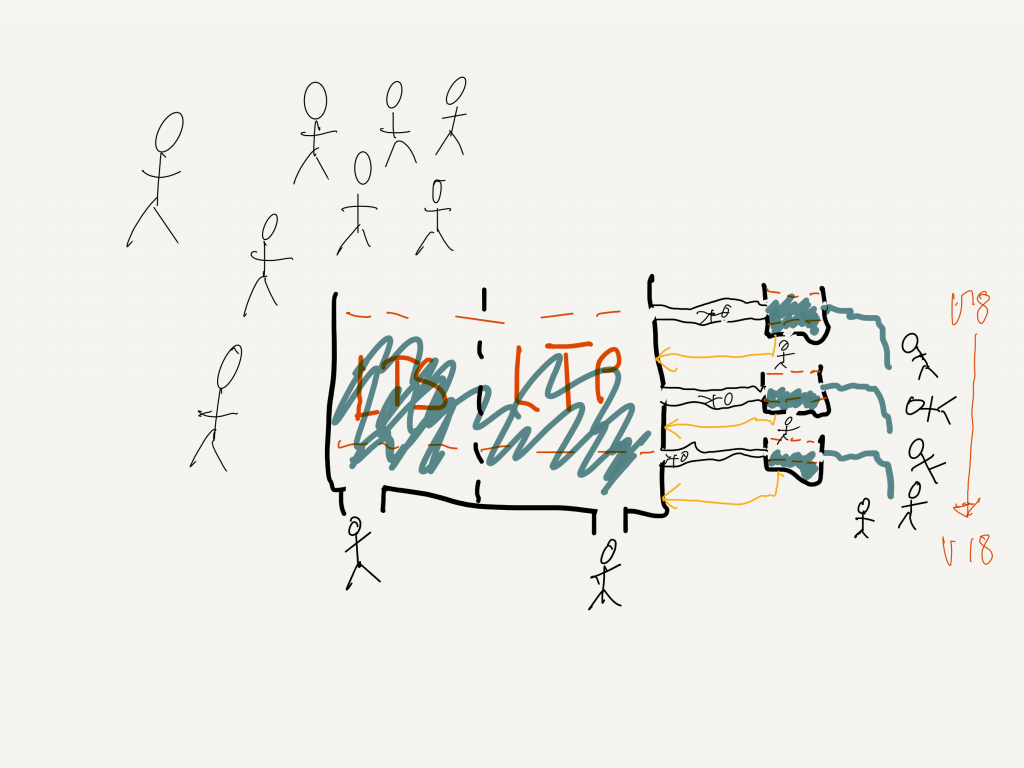Learn to Play Ice Hockey by Drawing Rich Pictures
The Open University Systems Thinking in Practice Twitter tweeted the following tweet the other day.

Now I responded that that it depended on perspective (yes, I know that despite coming from Liverpool I’m not funny), however it did force me to revaluate the role of Rich Pictures in Systems Thinking. Historically, Rich Pictures come from the Soft Systems approach and were first identified as a Systems Thinking Tool by Checkland in 1981 as part of the Soft Systems Methodology (SSM). Now I must confess SSM is my favourite flavour of Systems Thinking, however just as it would get boring to eat the same thing everyday, so it’s not always appropriate to use the same Systems Thinking methodology or techniques.
Equally there are times when it is worth using different tools from different methodologies to enhance an exploration of a situation of interest or to try and understand a mess, something that Mike Jackson refers to as the System of Systems thinking (SOSM). If you are interested in learning more about CST, of Systems Thinking in general then I highly recommend Mikes book, “Critical Systems Thinking and the Management of Complexity”. And for me one of the most versatile and useful tools that can be applied across multiple explorations is the Rich Picture.
But what is a Rich Picture I hear you ask, and what happens if I can’t draw? A Rich Picture is a personal interpretation summarising a situation and the key thing is that it is personal, therefore the only person that really needs to understand the picture is you! Thanks fully this means that artistic skills become irrelevant and it also means that the Rich Picture represents your perception of the situation. It is not intended to be as a way to communicate a solution or and there are no fixated conventions, however the Open University does offer some guidelines in it’s online learning for Systems Thinking and these can be found here; https://www.open.edu/openlearn/science-maths-technology/engineering-technology/rich-pictures
So it’s all very well talking about Rich Pictures but what does one look like? Well the picture below (if the art critics allow it to be called a picture) is one I have sketched to represent the situation of learning to play ice hockey. This comes from my perspective and presumes that people that want to play ice hockey also want to play in an ice hockey team (which is a dangerous presumption to make).

In my head I picture a lot of bathtubs to represent the different structures that form part of the process. You can see all of the potential players floating around, some of whom then fall into the bathtub that is Learn to Skate(LTS) and Learn to Play (LTP). I envisage LTS and LTP as one big bathtub as people need to learn to skate before they can learn to play and there is no clear point within the process when someone goes from learning to skate to learning to play. Now you will see at the bottom of the bathtub there is a hole and this is because not everyone who learns to skate or play will continue learning and they will drop out (or go down the plug hole in my perception). When people reach a certain standard they will move across from LTS/LTP to joining a ice hockey team. In my Rich Picture I have drawn junior ice hockey teams (again, as bathtubs), for no other reason other the I have a responsibility for developing junior ice hockey in England and Wales.
When a player (which is how I view someone who has graduated from LTP), joins an ice hockey team, they will join the appropriate age group. Within each age group there are two ways that a player can leave a team; they stop playing or they join another team, ideally by getting older and having to play in a team in the older age group. However there is both a minimum and a maximum number of players that a team can have and remain viable; too many players means some players will not get to play due to the rules of ice hockey and constraints such as ice rink availability and too few players means there is not enough players to play a game. Therefore there is some sort of feedback needed to LTS/LTP to either increase the number of players transferring to teams or to reduce the numbers being transferred.
From a Systems Thinking exploration the above text is verging on a reductionist interpretation, however the point isn’t to provide a full exploration of how people learn to play ice hockey, but is intended to show how a Rich Picture can be used and that high quality art isn’t required. Equally, it is not harmful to take this approach, and could in fact be beneficial as it could highlight fundamental elements of the system. For instance, in this case there is no mention of education or coaching and this leads to additional areas for consideration..
